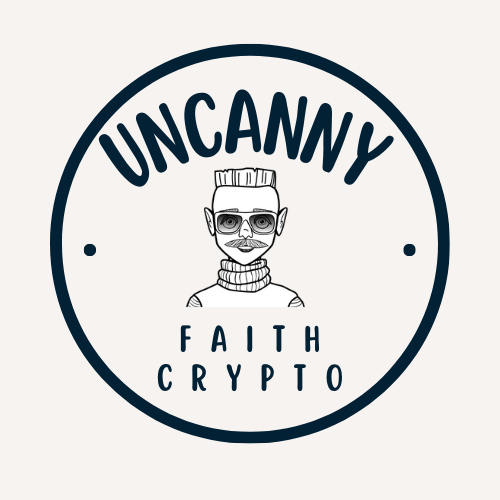In the fast-evolving world of blockchain and decentralised technologies, Radicle (RAD) has emerged as a potentially revolutionary solution for developers. As the cryptocurrency and decentralised finance (DeFi) sectors mature, questions about the value and future of tokens like RAD continue to stir discussions among investors, developers, and blockchain enthusiasts alike. But what exactly is Radicle? How is it disrupting traditional approaches to development? And, most importantly, what are the Radicle (RAD) price predictions for 2025? Let’s dive deeper into these questions while considering its growth potential within the decentralised ecosystem.
What is Radicle (RAD)?
Before assessing where RAD’s price may land in 2025, understanding its fundamentals is essential. Radicle is a decentralised network for software developers that provides peer-to-peer collaboration and code management. Unlike traditional platforms like GitHub, Radicle eliminates centralised authorities and intermediaries by enabling developers to work directly with one another using blockchain technology.
What makes Radicle unique is its focus on autonomy, privacy, and decentralisation. Built on Ethereum, Radicle enables developers to fund and sustain open-source projects using smart contracts, all while retaining full control over their work. RAD, the network’s native token, empowers its ecosystem by facilitating governance and incentivising users to contribute actively to the network.
Why is Radicle Important for Decentralised Development?
To understand why Radicle could play a significant role in the future of software development (and subsequently raise RAD token prices), it’s crucial to examine its value propositions:
-
Decentralisation: Unlike centralised platforms where a single corporation owns and controls project data, Radicle ensures that developers retain ownership and sovereignty over their work. This is particularly vital in an era where concerns over data privacy and censorship continue to grow.
-
Open Source Sustainability: Radicle enables developers to fund their work directly using cryptocurrencies, fostering a more sustainable and democratised funding approach.
-
Interoperability with Ethereum DeFi: By leveraging the Ethereum blockchain, Radicle users can seamlessly interact with popular DeFi ecosystems, allowing them to connect code repositories, developer projects, and funding requests with decentralised applications (DApps).
- Resilience to Censorship: Developers on Radicle enjoy censorship-resistant infrastructure, meaning their projects remain untouched by external restrictions.
With these features, Radicle is seen as more than just a platform for developers – it’s a decentralised alternative to centralised giants like GitHub and GitLab. The implications? A growing user base, increased adoption, and potentially bullish prospects for RAD token prices.
Radicle (RAD) Price Predictions for 2025: A Deep Dive
Now to the big question: Where could RAD’s price go by 2025? While predicting cryptocurrency prices can be challenging due to market volatility and unforeseen developments, we can use available data, expert insights, and current trends to make educated projections. Here are some estimates:
1. Bullish Case for RAD
In a bullish scenario, we assume widespread adoption of decentralised development platforms like Radicle. Factors that can contribute to such growth include:
- Increasing discontent with centralised platforms due to privacy issues or censorship concerns.
- Growing popularity of open-source funding using cryptocurrency.
- Expansion of Web3 and blockchain-based developer tools.
With such developments, market analysts believe RAD could reach as high as $20 to $30 USD by 2025. This is based on an optimistic assumption that the platform will onboard a significant number of developers globally while partnering with other DeFi and Web3 platforms.
Supporting Argument: If the DeFi market continues to grow exponentially – which it is expected to – Radicle could ride the wave of decentralisation trends and emerge as a preferred tool for software engineers.
2. Conservative Case for RAD
Not every cryptocurrency performs at its peak potential, and many external factors can slow down growth. These include regulatory challenges, competition from other decentralised platforms, or slower-than-anticipated adoption rates. In this moderate scenario, experts predict RAD’s price could settle between $10 and $15 USD by 2025.
While this range might appear conservative, it reflects healthy and sustainable growth, considering the platform still operates within a niche space. Adoption, market sentiment, and partnerships will play significant roles here.
3. Bearish Case for RAD
If Radicle encounters major roadblocks such as competing platforms, stagnant user growth, or general downturns in the crypto market, its price could struggle to gain traction. In the worst-case scenario, RAD may hover between $3 and $6 USD by 2025. Factors such as security vulnerabilities, regulatory scrutiny, or a lack of significant updates could hinder progress.
However, it’s worth noting that blockchain-backed decentralisation projects have firmly cemented their presence in the tech world, making total collapse unlikely.
Factors Influencing Radicle’s Future Price Trajectory
Several variables could directly impact RAD’s price movement over the next few years. Here are the key drivers to watch:
1. The Growth of Decentralised Development
Radicle’s success largely depends on how rapidly developers migrate towards decentralised ecosystems. If organisations, especially in Web3, embrace Radicle for managing their projects, demand for the RAD token could surge.
2. Platform Enhancements and Integrations
Announcements of platform improvements, partnerships with big names in the blockchain sector, or new DApp integrations could bolster Radicle’s reputation and price.
3. Broader Cryptocurrency Market Sentiment
Cryptocurrencies tend to fluctuate based on market-wide sentiment. A bullish crypto market in 2025 could naturally lift RAD’s price, while a bearish market could dampen its performance temporarily.
4. Utility of RAD Token
As the RAD token plays a primary role in governance and financial incentives within the network, its relevance to the ecosystem will determine its price stability and growth.
Expert Opinions on Radicle’s Future
Opinions among market analysts regarding RAD’s price predictions are generally mixed but cautiously optimistic:
- WalletInvestor: Their model suggests gradual growth for RAD, estimating an average price of around $12 by 2025.
- DigitalCoinPrice: They forecast a steady upwards trajectory, with the possibility of RAD hitting $15 by 2025 in the right market conditions.
- CryptoNewsZ: They predict a broader range, expecting RAD to trade between $10 and $25 by 2025 depending on market dynamics and adoption rates.
Final Thoughts: Can Radicle Revolutionise Decentralised Development?
Radicle is more than just a cryptocurrency project – it’s a movement towards empowering developers with decentralised tools. As demand for decentralised technologies continues to expand, Radicle’s relevance could increase further.
However, while the fundamentals of Radicle are strong, the token’s future price heavily relies on adoption, competition, and technological progress. For those invested in or considering RAD, keeping a close eye on project updates, Web3 developments, and user growth will be essential.
As for whether RAD will revolutionise decentralised development, the answer lies in its ability to onboard users and prove its value as a robust alternative to centralised platforms. While definitive success cannot be guaranteed, the potential is undeniable.
FAQs: Radicle (RAD) Explained
-
What is Radicle?
Radicle is a decentralised platform for software developers that enables peer-to-peer collaboration, code sharing, and funding using blockchain technology.
-
What makes RAD different from centralised platforms like GitHub?
Unlike centralised platforms, Radicle prioritises autonomy and privacy while enabling trustless, decentralised collaboration among developers.
-
What are the RAD price predictions for 2025?
Experts predict RAD could range from $10 to $25 by 2025, with bullish cases pushing it higher if decentralised development gains momentum.
-
How does Radicle support decentralised funding?
Developers on Radicle can receive funding directly from users and organisations through RAD tokens, removing intermediaries.
- Is RAD a good investment?
This depends on individual risk tolerance and belief in the project’s vision. Those confident in decentralised development may view RAD as a promising long-term investment.
By staying informed and tracking ongoing trends in the crypto and developer ecosystems, you’ll be better equipped to make decisions about whether RAD deserves a place in your portfolio or as part of the decentralised tech future.

